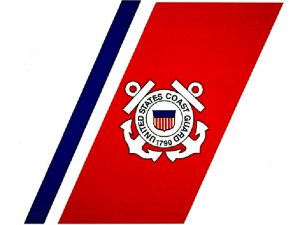
USCG issues bulletin on BWM compliance
It also announces a change to the terms of extended compliance dates the Coast Guard will issue to vessels.
Following is taken from the bulletin:
In all cases, a vessel’s “first scheduled drydocking” date for the purposes of compliance with the BWM implementation schedule is the date the vessel enters a drydock. For example, if a vessel enters drydock on or before December 31, 2015 and does not leave drydock until after January 1, 2016, the drydock is not considered the “first scheduled drydocking after January 1, 2016” for purposes of compliance;
- A drydocking begun after the date specified in either Table 151.1512(b) or 151.2035(b), as applicable, which is necessary for emergency repairs is not considered the first scheduled drydocking. However, if this drydocking satisfies the Administration for endorsing the Certificate of Inspection, passenger ship safety certificate, cargo ship safety certificate, or cargo ship safety construction certificate as the required survey of the bottom of the ship, this drydocking date is considered the first scheduled drydocking;
- A scheduled drydocking begun after the date specified in either Table 151.1512(b) or 151.2035(b), as applicable, to satisfy a statutory bottom survey requirement or to accomplish planned work (such as a drydocking to install exhaust gas cleaning equipment or to install a new bottom coating system), as opposed to emergency work, is considered the “first scheduled drydocking.”
An underwater inspection in lieu of drydocking (UWILD) is not considered the “first scheduled drydocking”; instead:
- For vessels that undergo one UWILD and one drydocking for statutory purposes every five years, the first scheduled drydocking is the first drydocking conducted for statutory purposes after the date specified in either Table 151.1512(b) or 151.2035(b), as applicable;
- For vessels that do not routinely undergo drydockings, their original compliance date is 1 January 2014 or 1 January 2016, depending on the vessel’s ballast water capacity.The Coast Guard recommends vessel owners maintain, in contracts, records, or logbooks, documentation of the date the vessel entered/left the drydock and the reason why the vessel was drydocked, and be prepared to present the information to Coast Guard compliance personnel if there are any questions concerning the vessel’s compliance.
Extended Compliance Date
A vessel that discharges ballast water in waters of the U.S. after its original compliance date must comply with the requirements under 33 CFR 151.1512 or 151.2035 for approved BWM methods. However, the master, owner, operator, agent, or person in charge of a vessel may apply to the Coast Guard for an extended compliance date if they can document that, despite all efforts, compliance with the requirement under 33 CFR 151.1510 or 151.2025 is not possible.
The Coast Guard is revising the terms of extended compliance dates, and will issue a revised CG-OES Policy Letter 13-01. A vessel’s extended compliance date will now be the “next scheduled drydocking” after the vessel’s original compliance date. Existing extension letters will not be re-issued, but this change in terms will be made when a vessel applies for a supplemental extension. Information on applying for an extended compliance date is available at http://homeport.uscg.mil/ballastwater in the “Regulations and Policy Documents” sub-folder.
Access the bulletin HERE
